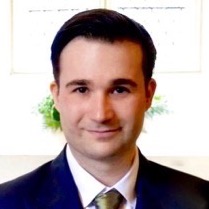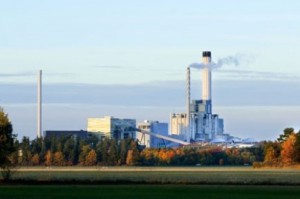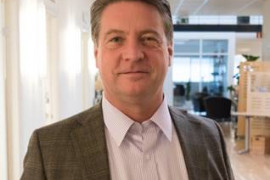After a few years working for ABB, Björn Malmström founded Energy Opticon in 1989 to develop tools for managing heating and cooling networks. Today is one of the most experienced and recognized players in the Nordic countries and Germany in terms of optimising production in heating networks.
How important has optimizing energy production become for heat network operators today?
Heating network operators have faced issues relating to the optimization of energy production since heating (or cooling) networks were created. The reason for this is that the optimization problem leads to many constraints which can be quite complicated to handle for operators, such as:
- What production units must be on and when?
- How much heat must be produced to meet the consumption per hour in the heat network?
- What heat load is necessary?
- How should the thermal storage charging and discharging be planned?
Due to the complexity of these decisions, many mathematical calculations are necessary. Before the computer age, these calculations were done manually sometimes, but more often they were not carried out at all. The consequence was that the companies operating the heating networks were often not really economically optimized. However, with the advent of computers, it has become common for heat network operators to avail of support from optimization programs in their daily operations – thereby improving their economic management.
In addition to the improvement of internal management problems, the deregulation of the electricity markets since the 1990’s has reinforced the need for optimising production in heating or cooling networks. Indeed, the advent of deregulation has introduced new opportunities (and constraints as well) for operators with new requirements and new levels of complexity.
The deregulation of the electricity market raises questions like:
- How much electricity produced each day can be sold on the electric power market?
- How to take into account variations in electricity prices on the electricity market in the scheduling of electricity production?
- How to avoid power imbalances and differences between expected and actual electricity balances?
These questions raise their head, to varying degrees, for most of the leading energy companies in the European Union, the USA, Australia, New Zealand, Japan and Russia. To be able to manage all these issues in an economically correct manner makes good optimization software an absolute necessity.
What trends have you observed in the optimization of energy production in the Nordic district heating network over the past 20 years?
Over the past 20 years, economic management improvement and energy production optimization tools have become common among power generation companies (see above). Companies operating heating or cooling networks are now clearly focused on improving these tools, especially if they have to manage a cogeneration. The Nordic operators of district heating systems now put economic issues at the heart of their concerns. Operators that do this effectively are successful companies and are recognized as such. Thus, all district heating managers are also keen to rapidly introduce IT tools not only for optimizing their energy production, but also for the economic monitoring of fluctuations in energy production and trading of electricity.
Over the past three years, a new factor has also strongly influenced the electricity market throughout Europe, but particularly in Northern Europe: the breakthrough of renewable energy sources. Wind power, but also to some extent solar energy, have made important strides. For example, in Germany and Denmark, there was a sharp increase in the construction of new wind or solar installations. This led to a situation whereby on windy days, wind generated power impacts all other power producers due to the impact on prices of the electricity market. The price of electricity was on the electricity exchange dropped to practically zero (or even lower). Conversely, in periods when there is no wind at all, the electricity price can be much higher.
These large fluctuations in electricity prices made the situation more complex for cogeneration companies. At high electricity prices, production units should operate on high load and thermal storage is required. But for low electricity prices, you might want to stop the turbines. These start and stop decisions may in many cases be very difficult to take (without the support of IT tools). This new situation on the electricity market is a permanent change that all power generation companies will face at one time or another.
Another strong trend over the last 20 years in the northern district heating market is the rapid introduction of household waste incineration units (WTE). All municipalities now have much more structured waste management policies. Municipalities are therefore willing to pay for the collection and incineration of waste. This means that the company operating the heating network may invest in the construction of waste incineration plants by taking the hypothesis of a negative fuel cost. These incinerators are normally profitable and generate significant additional revenue for heat network operators. The Nordic operators provide today from waste from all European countries that do not have such district heating systems where they can burn their waste.
Example of a heating network plant that combines energy production optimization, electricity trading and household waste incineration.
Source: Mälarenergi AB
Finally, a big trend has been that local heating networks interconnect with each other through heat pipes to form larger regional heating networks. Thanks to this system, heating networks can spread heat more economically (eg from waste incineration) and beyond, thereby avoiding costly thermal load decreases.
What are the essentials required to effectively optimise energy production in a district heating system?
The way in which companies operating the heating networks handle all optimization issues is crucial for them. Those companies are now quite simply obliged to place economic management of the network at the heart of their business strategy. They must optimise their thermal load economically, but they also have to optimise their energy production plans and to take account of electricity prices on the market.
The tools they use for all these optimizations are also often used for economic monitoring and management of their investments to provide for the payback and ROI of certain investments. An example of this economically driven approach is shown in the chart below.
Example of an operational economic follow up for a heating network.
Source: Energy Opticon
These automatically generated diagrams provide an overview of how the economic objectives were achieved during the past year. There are so many examples of how these companies were able to improve their economic performance by millions of euro annually. By putting the economy at the canter of their actions, the district heating network operators have managed to make substantial economic gains.
Energy Opticon has optimised the Grenoble network since 2012. Based on this experience, how would you define the French market compared to markets in northern Europe?
Grenoble is a large district heating network and shares many similarities with the Nordic district heating networks; for example, the extensive use of biomass in the production of heat.
What is different, especially when compared with the situation for Nordic companies, are the contracts for natural gas and electricity. On the Nordic market, pricing is made using one fixed price per hour and this price is the same for all companies.
In general, French district heating systems are smaller than in the Nordic countries. But my impression is that the French heating networks are being consolidated and are growing at a relatively fast pace, which makes them more comparable with the Nordic countries.
Another difference is that in northern Europe, heating networks are normally both the owner and the operator of both the district heating network and the production plants, while in France, the operators are often not the same as the owners.
From your perspective, what must be taken into account on the organization of the operation of a heating network when you implement an optimization solution for energy production?
Firstly, it is critical that the operator of the heating network is convinced that the economic impact matters for the optimization of energy production. This means that management must give itself the means to achieve its ambitions, including the allocation of resources for qualified staff dedicated to this work. We must be clear on this subject: implementing sophisticated software is not as simple as turning on a computer and the economic benefits do not come automatically.
Some important aspects to consider are for example:
- There should be at least one “Super User” for the optimization system and a person who masters all the economic and technical aspects of the optimization of energy production systems
- Senior Management must also be at the heart of the production optimization process and should clearly communicate to all staff how optimization is everyone’s concern. This focus on the economy and the optimization can be achieved by creating spreadsheets which are accessible to everyone.
What impact will the deregulation of the French electricity market have on French operators of heating networks?
This opening up of the market will surely have a great impact on heating network operators, particularly those with cogeneration plants. Changes in electricity prices will demand a more complex planning for the production of electricity.
On the other hand, this may be a new opportunity for heating networks to improve their profitability. As mentioned previously, renewable energy sources like wind tend to create imbalances in electricity networks; the need to increase its power reserve capacity will also be required. Heating networks have the resources to become major players in this re-balancing. Major French nuclear plants cannot do that, because they are designed to operate at base load for stable production. Heating networks, with their cogeneration turbines can provide power generation capacity reserves combined with thermal energy storage reserves. This dual capacity can undoubtedly become an important and useful source of additional income for the community. However, implementation will require the use of more sophisticated optimization software that needs to be carefully maintained and which will necessitate training the operating personnel.






